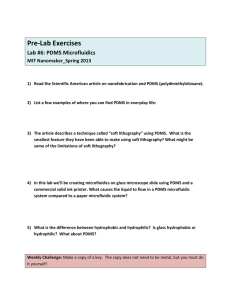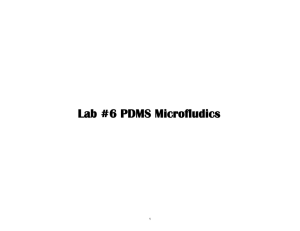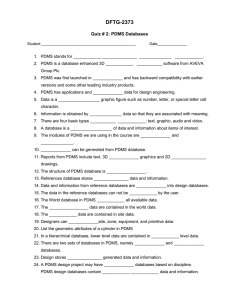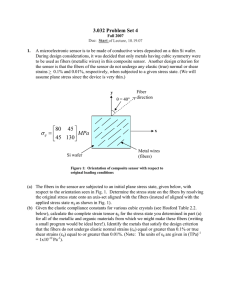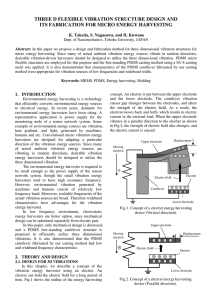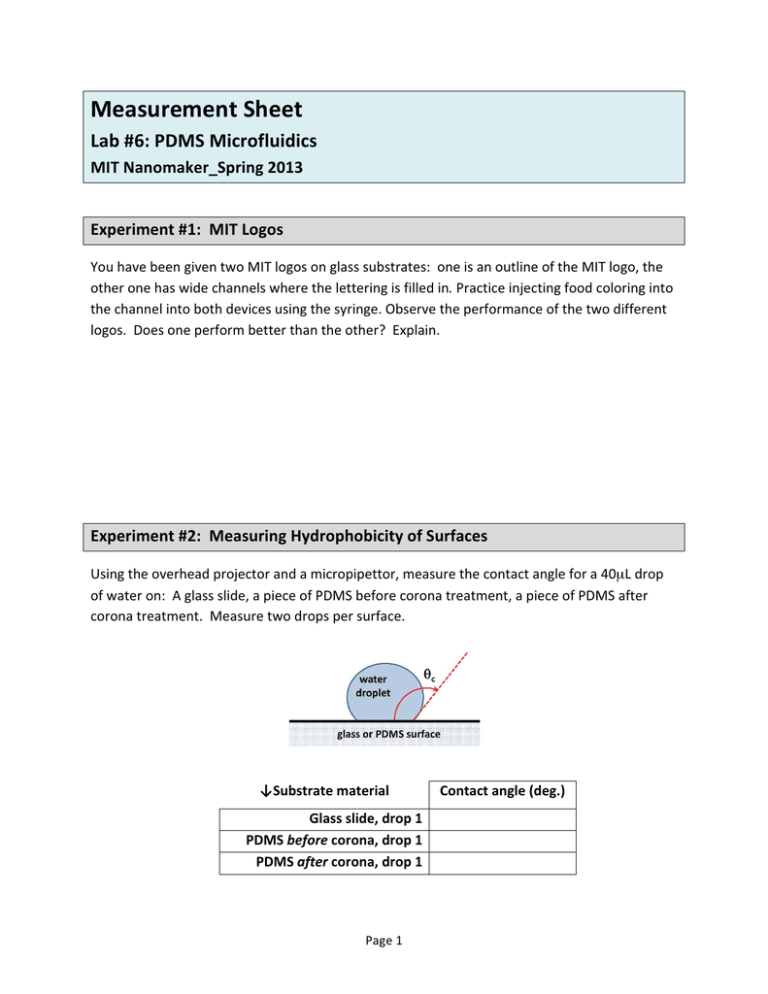
Measurement Sheet
Lab #6: PDMS Microfluidics
MIT Nanomaker Spring 2013
Experiment #1: MIT Logos You have been given two MIT logos on glass substrates: one is an outline of the MIT logo, the
other one has wide channels where the lettering is filled in. Practice injecting food coloring into
the channel into both devices using the syringe. Observe the performance of the two different
logos. Does one perform better than the other? Explain.
Experiment #2: Measuring Hydrophobicity of Surfaces Using the overhead projector and a micropipettor, measure the contact angle for a 40μL drop
of water on: A glass slide, a piece of PDMS before corona treatment, a piece of PDMS after
corona treatment. Measure two drops per surface.
"Substrate material
Glass slide, drop 1
PDMS before corona, drop 1
PDMS after corona, drop 1
Page 1
Contact angle (deg.)
Experiment #3: Relative Channel Flow You have been given a microfluidic test chip with a single input and two different channel
widths. Determine the ratios of the flow rates of the different channels by injecting food
coloring from one side of the chip and measuring the flow distance at three different times.
Time 1
Time 2
Channel 1
Δ x (mm)
Channel 2
Δ x (mm)
Time 3
How much more quickly or slowly does the Channel 2 flow compared to Channel 1? Why?
How does this compare to behavior in paper microfluidic channels?
Page 2 Experiment #4: Laminar Flow You have been given instructions to make a microfluidic chip with two inputs, two outputs, and
a long channel connecting the two. Inject two different dyes, one into each input channel. By
varying the pressure in each of the input syringes, how does the behavior of flow in the channel
change? How does this affect the composition of dye at each of the outputs?
Experiment #5: Designing a PDMS Microfluidic Chip Break up into groups. Discuss with your group and design your own "Lap-on-a-Chip". Please
describe its function and what analysis you will be able to perform.
Page 3 Follow-up Questions: -
How do PDMS defoamers work in your chicken nuggets? -
If you leave the laminar flow chip on a table for a couple days, what would happen to
the dyes?
-
A unique property of PDMS is the relatively large solubility of air in PDMS. Oxygen
solubility of PDMS is 300 ml/kg at room temperature. An average of human oxygen
consumption rate is 0.6 g/min. How long can a person live in a PDMS castle with a
volume of 1000 m3? (careful about the units)
-
When a drop of food coloring on a glass slide dries out, you will see a picture similar to
below. Why is there a ring stain formed along the perimeter?
© Flow Science, Inc. All rights reserved. This content
is excluded from our Creative Commons license. For
Page 4 more information, see http://ocw.mit.edu/fairuse.
MIT OpenCourseWare
http://ocw.mit.edu
6.S079 Nanomaker
Spring 2013
For information about citing these materials or our Terms of Use, visit: http://ocw.mit.edu/terms.

